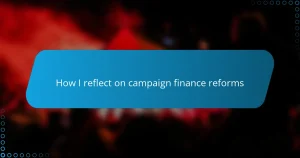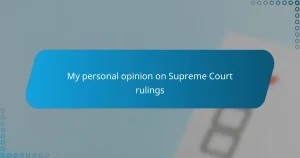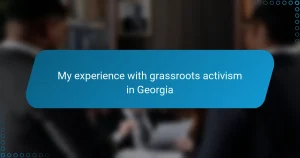Key takeaways
- Public opinion trends are influenced by emotional reactions, often shifting dramatically due to specific events or personal stories.
- Data from established polling organizations, social media analytics, and local insights provide a comprehensive understanding of public sentiment.
- Language patterns and sentiment analysis are crucial in identifying underlying changes in political sentiment.
- Storytelling and grassroots movements can significantly impact public opinion, sometimes bypassing traditional polling metrics.
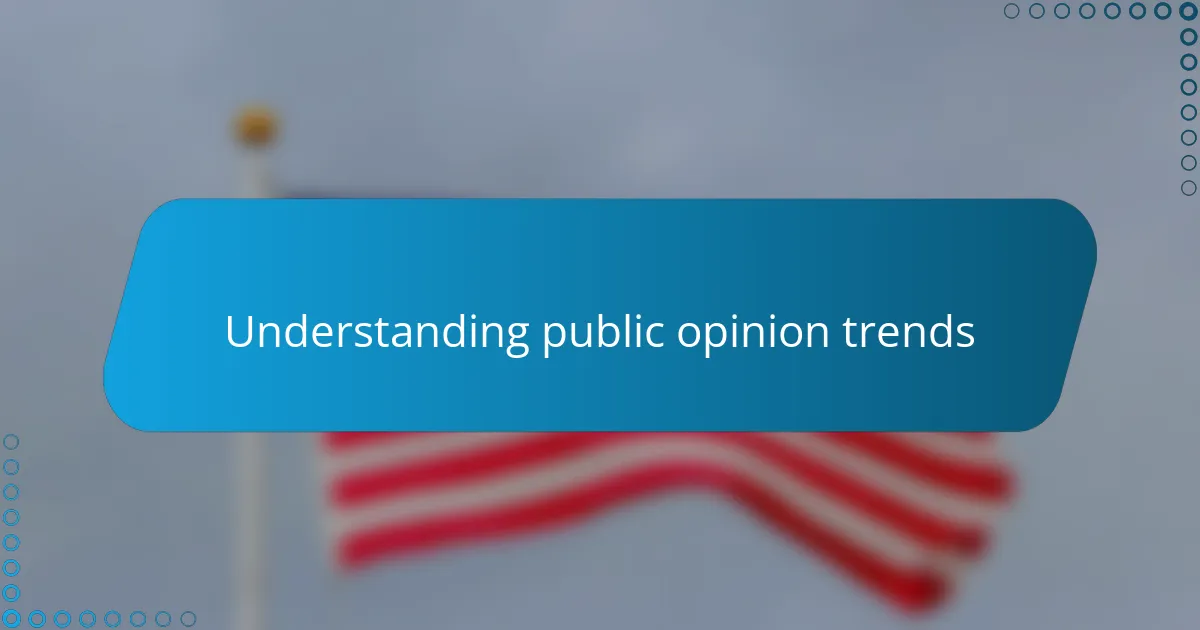
Understanding public opinion trends
Understanding public opinion trends often feels like piecing together a complex puzzle. From my experience, it’s not just about numbers or polls; it’s about reading between the lines—catching the subtle shifts in how people feel and think over time. Have you ever noticed how a small news event suddenly changes the public mood overnight? That’s the kind of pulse I try to capture.
I remember watching a particular election cycle where a candidate’s stance on a single issue dramatically altered public support in just weeks. It made me realize that trends aren’t always gradual; they can spike unexpectedly, driven by emotion more than logic. This emotional undercurrent is what makes analyzing public opinion both fascinating and challenging.
What drives these trends beneath the surface? I believe it’s a mix of personal values, current events, and a collective sense of hope or fear. Trying to untangle these forces requires patience and a keen eye for context. Without that, public opinion is just a snapshot—never the full story.
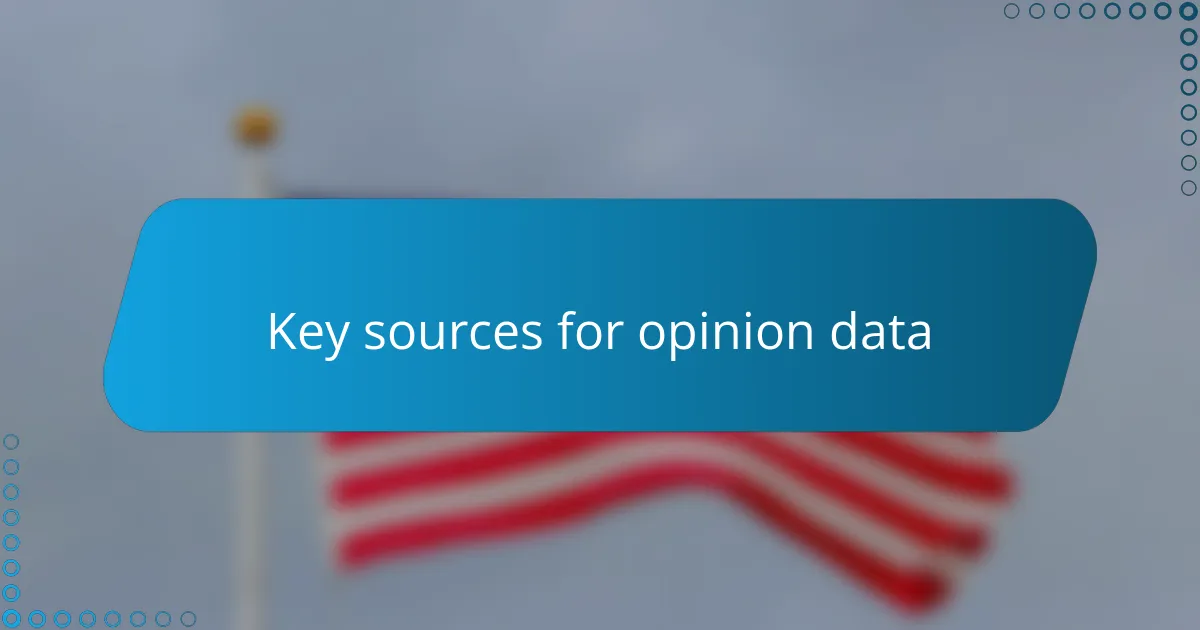
Key sources for opinion data
When digging into public opinion, I always start with established polling organizations like Gallup and Pew Research Center. Their long histories and rigorous methodologies give me a dependable foundation, but I also watch how their numbers shift alongside breaking news or social media buzz. Have you noticed how a Gallup poll can sometimes confirm what you’ve been sensing informally from conversations around you?
Social media analytics have become an invaluable tool for me in recent years. Platforms like Twitter and Facebook produce real-time data that can reveal sudden mood swings or emerging topics, often before traditional polls catch up. I find it fascinating how a viral hashtag or a trending topic can act like a spotlight, illuminating public sentiment in ways survey questions sometimes miss.
Of course, I never rely on just one source; triangulating data from multiple outlets helps me see the fuller picture. Local news reports, focus groups, and even anecdotal evidence from community forums often provide nuance that larger datasets can overlook. Isn’t it interesting how these smaller, qualitative sources can sometimes speak louder than headline numbers?
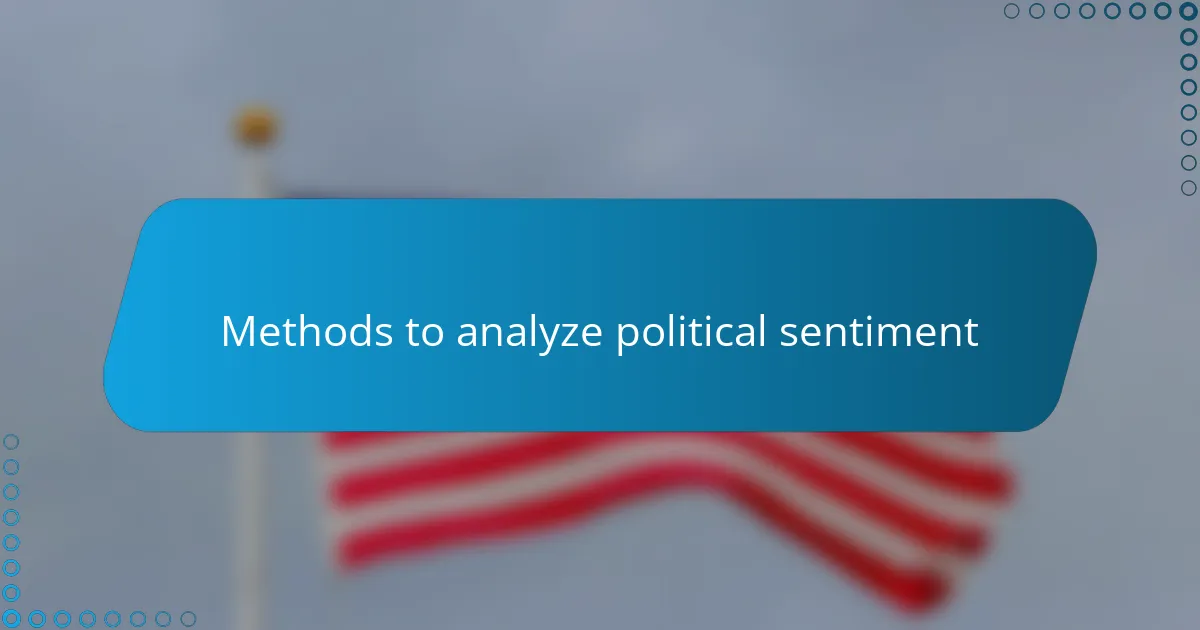
Methods to analyze political sentiment
When it comes to analyzing political sentiment, one method I lean on heavily is sentiment analysis using natural language processing tools. These tools scan thousands of social media posts and news articles, assigning positive, negative, or neutral scores to capture the public mood. It’s like having a lens that filters through the noise to pick up subtle emotional cues that often escape traditional surveys.
Another approach I find invaluable is tracking changes in language patterns over time. For example, shifts in the words people use—words loaded with hope or fear—can signal an underlying change in how the electorate feels about an issue. I once noticed this during a midterm election cycle, where a rising use of anxiety-related terms preceded a sharp drop in a candidate’s approval ratings. It showed me how language itself is a powerful indicator of sentiment.
Have you ever wondered why some polls miss sudden mood swings? From what I’ve seen, real-time data from social media combined with qualitative insights like town hall feedback or editorial tone analysis provides the missing context. This blend lets me see beyond numbers—unlocking the emotional layers beneath political opinions and guiding a more nuanced interpretation of public sentiment trends.
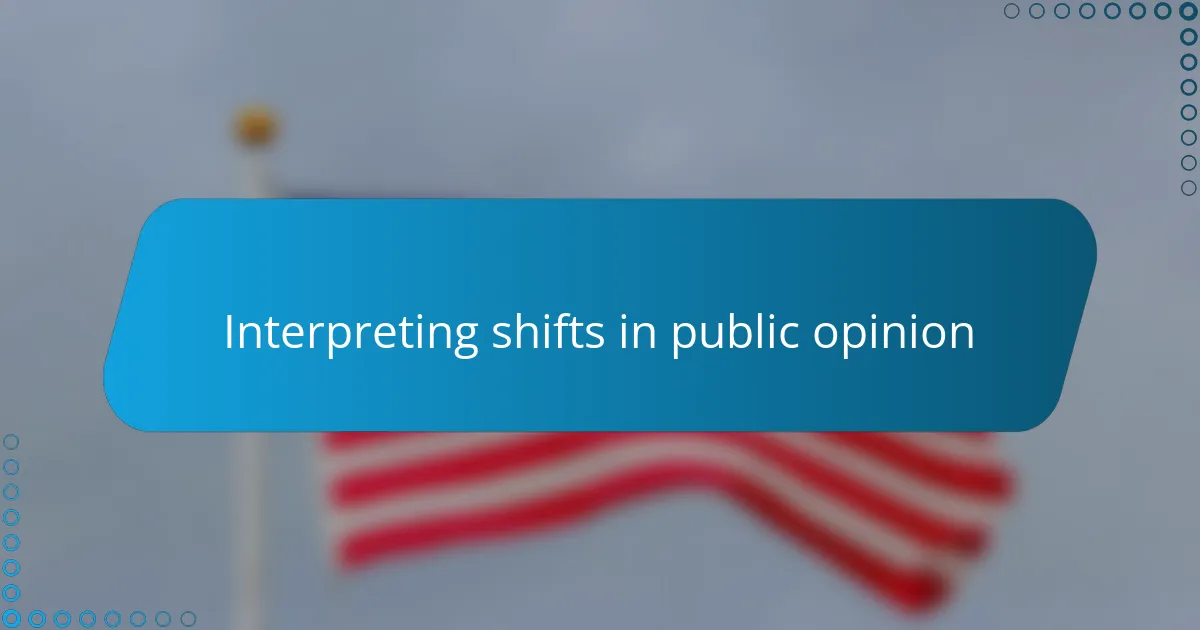
Interpreting shifts in public opinion
Interpreting shifts in public opinion is often about noticing the moments when the usual patterns break. I recall watching a policy debate shift public sentiment almost overnight—not because of new facts, but due to how the issue touched people’s core values. Have you ever caught yourself changing your view suddenly after hearing a personal story or a news angle you hadn’t considered before?
Sometimes, the most telling signs aren’t numbers at all but the change in tone or emphasis within public conversations. I’ve learned to pay close attention when hopeful language gives way to frustration or anxiety; these emotional shifts often precede larger trends. It’s like reading the weather patterns of public mood—subtle at first, but gradually building into a storm.
What I find most fascinating is how complex context shapes these shifts. Current events might trigger a reaction, but it’s the mix of historical grievances, media framing, and grassroots voices that truly redefine opinion. In my experience, stepping back to see these connections helps me interpret not just what people think, but why they think it that way.
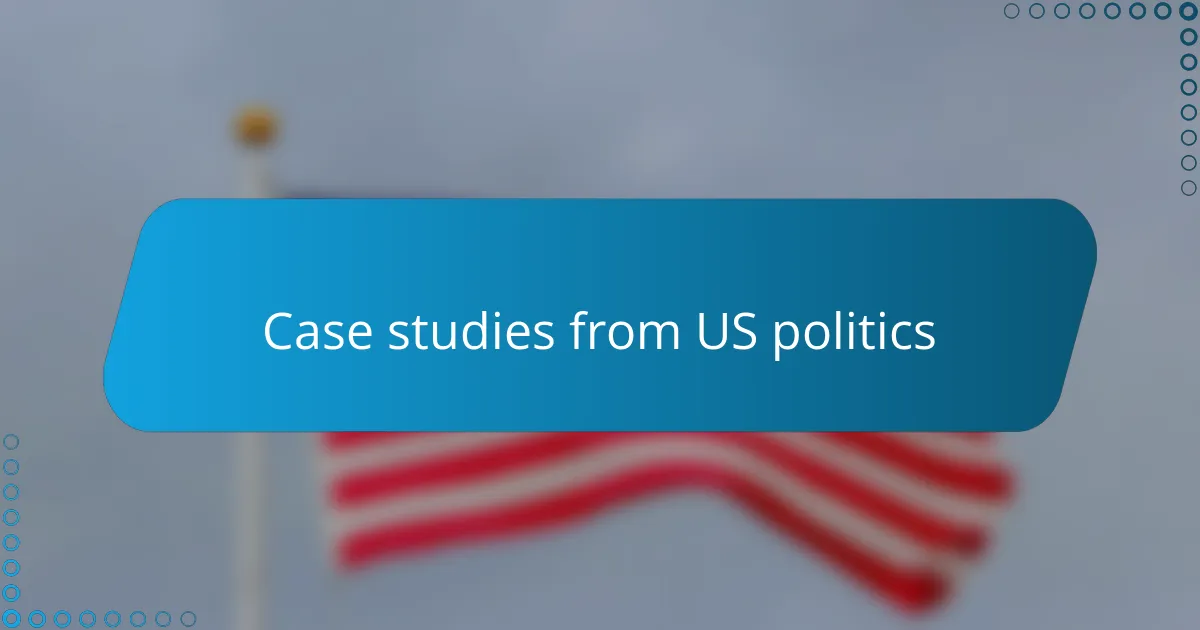
Case studies from US politics
Remember the 2016 presidential campaign? Watching how public opinion swung wildly after each debate was a real eye-opener for me. One moment, a candidate’s poll numbers would rise sharply because of a strong performance; the next, a controversial remark would send approval ratings tumbling. It highlighted how volatile opinions could be—and how quickly emotions could override policy details.
Another striking example came during the Affordable Care Act debates. I noticed that public sentiment didn’t just shift because of the legislative content but due to stories shared by real people about their healthcare struggles. Those narratives humanized the issue and shifted the tone from abstract policy to personal urgency. It reinforced my belief that storytelling can be a powerful driver in opinion trends.
Have you ever seen how social movements like Black Lives Matter reshaped political attitudes in a short time? I have, and what struck me most was how grassroots activism, amplified by social media, created a groundswell that traditional polls initially missed. This case taught me to continuously balance quantitative data with on-the-ground social dynamics to fully grasp evolving public opinions.
